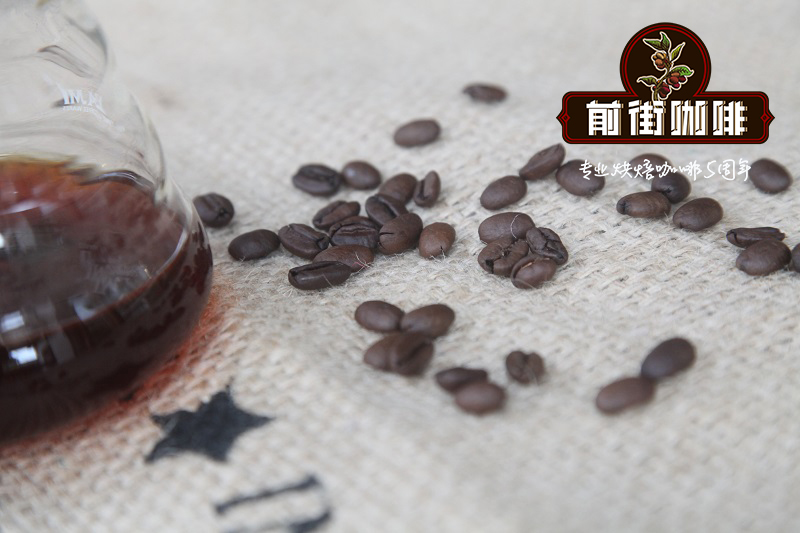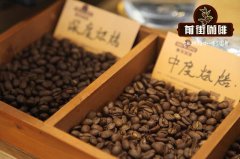Yemen mocha coffee beans what kind of_mocha coffee beans ranking_single mocha coffee beans characteristics

Professional coffee knowledge exchange more coffee bean information please follow the coffee workshop (Wechat official account cafe_style)
Coffee producing areas in Yemen:
Beans and berries produced in Yemen (Peaberrybean): this coffee bean is smaller and rounder than most coffee beans and looks like peas, sometimes called mocha coffee beans. Mocha beans are similar in shape to Ethiopia's Harrar coffee beans, with small particles, high acidity and a strange and indescribable spicy flavor. Taste carefully, but also can distinguish a little chocolate flavor, so the attempt to add chocolate to coffee is a very natural process of development.
In Yemen, coffee growers plant poplars to provide shade for coffee trees to grow. As in the past, these trees are planted on steep terraces to maximize the use of less rainfall and limited land resources. In addition to the Tippika Coffee Tree and the Bourbon Coffee Tree, more than a dozen different coffee species native to Ethiopia are grown in Yemen. Authentic mocha coffee is only produced in the Republic of Yemen in the southwest of the Arabian Peninsula, grows on steep hillsides at elevations of 3, 000 to 8, 000 feet, and is the oldest coffee in the world.
● Mokamadali (Mokha Mattari): the most famous name of the coffee market in Bani Mattar (another word for Bany Mattar) from the western part of the Yemeni capital Sana'a. Coffee is produced at high altitude, usually with a good aroma of red wine, dry fruit, thick taste, deep-roasted and often bitter sweet chocolate. Good quality Madali beans are small in shape, with sweet wine and moderate ripe fruit fermentation flavor of raw beans. Always the winner because of the more obvious Yemeni style.
● Moca Sanani (Mokha San'ani): a wide market name for coffee from some growing areas west of the Yemeni capital Sana'a. It is a mixture of beans from tens of thousands of small farms on the hillside near the capital San'a (left, Sana'a, Yemen). Planted at a slightly lower altitude than Madali, generally speaking, it tastes thinner and less acidic, but it has a good fruit flavor and often has better ripe fruit and wild game than Madali. According to my experience, the quality of Sanani varies greatly in recent years, and sometimes there are inferior goods with flat flavor, fishy smell and excessive fermented flavor. Careful cup testing and selection is a must for coffee makers to do their homework and must not be lazy.
● Mochayishi Mary (Mokha Ismaili): one of the traditional ancient tree species, a market name for famous coffee from central Yemen, is also described as a plant classification of traditional Yemeni coffee with high drink quality. Planted at a high altitude of more than 6500 feet, the beans are characterized by a more round shape, smaller beans than Madali, thick taste and high complexity. In general, they often outperform Madali. This is the least produced and most expensive Yemeni mocha (Yemeni mocha is no longer cheap). The high-quality Mokayishi Mary is produced in Hirazi (although it is famous as Bani Matar, it is the best-known local reputation in Yemen). The highest elevation in Hirazi is 8000 feet.
● Mokaremi (Mokha Rimi): produced in the Djebel Remi (also known as Raimi, Rayma) area, the quality is similar to that of Shanani, which is usually slightly fermented, occasionally with surprisingly strong sweet aromas of raisins, and when roasted properly, the coffee beans smell like opening a full-bodied bottle of jam.
● Moqayafi (Mokha Yafeh): produced in the southern province of Yafeh (also known as Yaffe), belongs to the uncommon Yemeni mocha, is the only "southern flavor" in Yemen, and produces little, almost all of which are sold to the neighboring United Arab Emirates, and are rarely seen in the international boutique coffee market.
● Arabian mocha: a coffee of single origin in the mountains of Yemen from the southwestern tip of the Arabian Peninsula bordering the Red Sea. The best cultivated coffee in the world is famous for its high viscosity and special acidity of rich wine.
The Yemeni mocha has achieved different genres according to the planting areas, such as the chocolate and sour taste of the MATTARI mocha, and the rough and fragrant taste of the SANANI mocha.
Features of ● Yemeni mocha beans:
Despite the high quality and smooth aroma of Yemeni coffee, there is something unsatisfactory, that is, the quality can not be continuously guaranteed, and the classification of its coffee beans is uncertain. Traditionally, the best coffee beans in Yemen come from Mattari, followed by Sharki, followed by Sanani. These coffee beans are low in caffeine. Deep-roasted Yemeni coffee often shows a chocolate-like bitter sweet flavor, affecting today's fancy coffee seasoned with chocolate sauce is also known as the word "mocha". Yemeni coffee has the most unique, rich and fascinating complex smell in the world: red wine, wild game, dried fruit, blueberry, grape, cinnamon, tobacco, sweet spices, log and even chocolate. you can see all kinds of adjectives used in Yemeni mocha. Just as there are many meanings of mocha, there are various spellings of mocha in English: Moka, Moca and Mocca are all common spellings, and there are as many as four local spellings on sacks and documents of Yemeni coffee: "Mokha", "Makha", "Morkha" and "Mukha", which all have the same meaning.
The taste of Yemeni mocha is complex and changeable, and how to bake the best flavor of Yemeni mocha is a challenge for coffee roasters. Medium and shallow roasting shows sweet fruit, mild, warm sun-fermented flavor; deep baking shows a strong aroma of red wine, bitter sweet chocolate finish.
Flavor: exotic, slightly alcoholic, spicy and exciting, different, must be tasted
Suggested baking method: medium baking
★★★: excellent
● Yemen single Mocha Coffee Bean Brand recommendation
Qianjie coffee roasted single mocha coffee beans-[Yemeni Mokamatari ancient sun] are fully guaranteed in terms of brand and quality. More importantly, the performance-to-price ratio is extremely high, a pack of half a pound 227 grams, the price is only about 85 yuan. According to the calculation of 15 grams of powder per cup of hand-brewed coffee, 15 cups of coffee can be made in a bag, and each cup of American coffee costs only about 5 or 6 yuan, which is very cost-effective for coffee shops to sell dozens of yuan a cup.
Qianjie coffee: Guangzhou bakery, the store is small but a variety of beans, you can find a variety of unknown beans, but also provide online store services. Https://shop104210103.taobao.com
Important Notice :
前街咖啡 FrontStreet Coffee has moved to new addredd:
FrontStreet Coffee Address: 315,Donghua East Road,GuangZhou
Tel:020 38364473
- Prev

How to distinguish between fancy mocha coffee and mocha bean coffee
Professional coffee knowledge exchange more coffee bean information please follow the coffee workshop (Wechat official account cafe_style) Mocha gets its name from the famous port of Mocha. In the 15th century, the outward transportation industry of the whole coffee country in Central and East Africa was not prosperous. Yemeni Mocha was a major commercial port for coffee export near the Red Sea at that time. Although later,
- Next

What are the advantages of drinking mocha coffee _ which coffee beans are suitable for mocha _ how to make mocha coffee beans
Professional coffee knowledge exchange more information about coffee beans Please follow the coffee workshop (Wechat official account cafe_style) CafeMocha coffee is one of the oldest coffee, its history can be traced back to the origin of coffee. It is a mixture of Italian espresso, chocolate sauce, whipped cream and milk. Mocha gets its name from the famous port of Mocha. In the 15th century, the whole Middle East was not coffee.
Related
- Detailed explanation of Jadeite planting Land in Panamanian Jadeite Manor introduction to the grading system of Jadeite competitive bidding, Red bid, Green bid and Rose Summer
- Story of Coffee planting in Brenka region of Costa Rica Stonehenge Manor anaerobic heavy honey treatment of flavor mouth
- What's on the barrel of Blue Mountain Coffee beans?
- Can American coffee also pull flowers? How to use hot American style to pull out a good-looking pattern?
- Can you make a cold extract with coffee beans? What is the right proportion for cold-extracted coffee formula?
- Indonesian PWN Gold Mandrine Coffee Origin Features Flavor How to Chong? Mandolin coffee is American.
- A brief introduction to the flavor characteristics of Brazilian yellow bourbon coffee beans
- What is the effect of different water quality on the flavor of cold-extracted coffee? What kind of water is best for brewing coffee?
- Why do you think of Rose Summer whenever you mention Panamanian coffee?
- Introduction to the characteristics of authentic blue mountain coffee bean producing areas? What is the CIB Coffee Authority in Jamaica?

